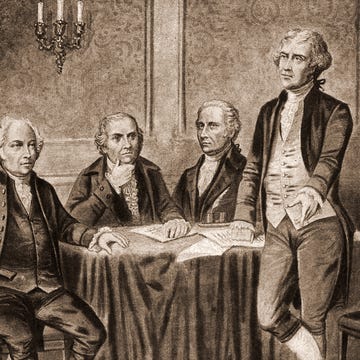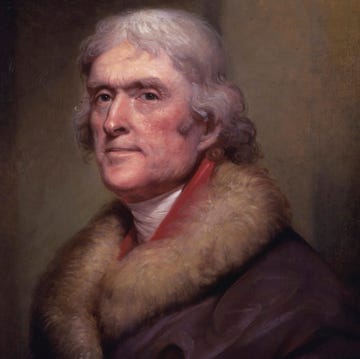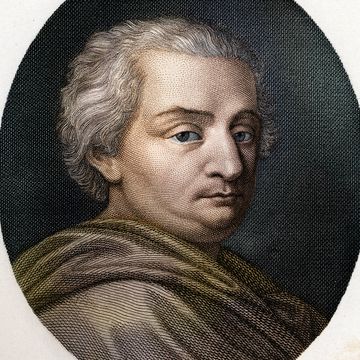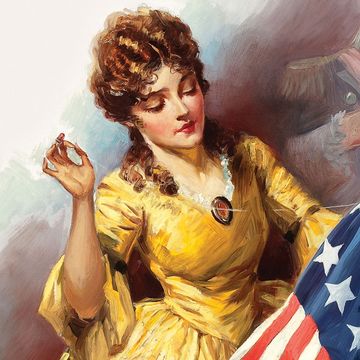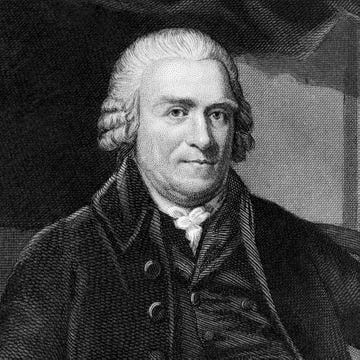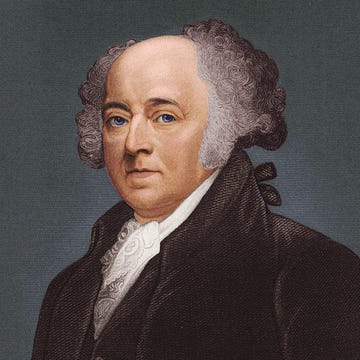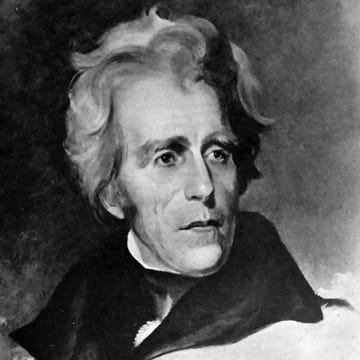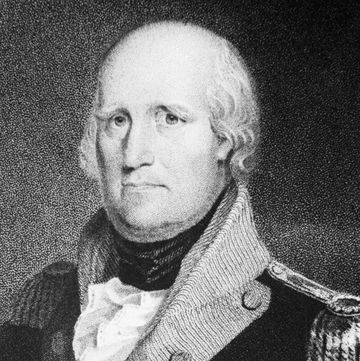1735–1818
Who Was Paul Revere?
Paul Revere was an American revolutionary who famously warned a colonial militia of approaching British soldiers on April 18, 1775. Before the war, the Boston colonist was a respected silversmith and artisan. Revere began to support American independence in the 1760s and later took part in the Boston Tea Party. His legendary midnight ride on horseback and a notification system of lanterns he devised contributed to the patriots’ victory in the Battles of Lexington and Concord, which began the Revolutionary War. The folk hero died at age 83 in May 1818. Among the memorials in his honor is the Paul Revere House, now a museum where he once lived.
Quick Facts
FULL NAME: Paul Revere
BORN: January 1, 1735
DIED: May 10, 1818
BIRTHPLACE: Boston, Massachusetts
SPOUSES: Sarah Orne (1757–1773) and Rachel Walker (1773–1813)
CHILDREN: 16
ASTROLOGICAL SIGN: Capricorn
Early Life, Career, and Family
Paul Revere was born on January 1, 1735, in Boston. At the time, the port city was part of the Britain’s Massachusetts Bay Colony. He was the son of Apollos Rivoire, a French Huguenot who immigrated to America at age 13, and Deborah Hichborn, a Boston native and the daughter of an artisan family.
Rivoire, who anglicized his own name to Paul Revere soon after arriving in America, was an artisan himself. After a long apprenticeship with a goldsmith, the elder Revere set up a shop in the sometimes rough North End section of Boston. When he was old enough, his son Paul, the third of nine children and eldest living son, left school to become his apprentice.
By all accounts, the young Revere was a serious and committed artisan. When he was 19, tragedy struck when his father died, leaving him to support his mother and siblings and take over the silversmith shop, though he was technically too young to be in charge of the business.
In 1756, Revere enlisted in the provincial army, likely to earn a steady income, but returned home just months later. Soon, Revere also had his own family to care for. In 1757, he married Sarah Orne, with whom he had eight children. Not long after her unexpected death in 1773, Revere married Rachel Walker, with whom he had another eight children.
Revere, who augmented his income by becoming an engraver and dentist, was a master goldsmith by the 1760s, faring well in a colonial city that was struggling economically due to British tax policies. His clients included both artisans like himself and the city’s upper class, whose homes were adorned with Revere-made tea sets and spoons.
Boston Tea Party
Even as his business did well, Revere took stock of the situation around him. As others struggled, he sensed that his own livelihood could soon be affected unless issues with the British were soon addressed. In 1760, Revere joined the Freemasons, America’s oldest fraternal organization, and befriended other activists such as James Otis and Dr. Joseph Warren. As his confidence in his leadership abilities grew, so did his responsibilities.
Following the passage of the Stamp Act in 1765, which imposed taxes on printed materials in the American colonies, Revere joined the Sons of Liberty, a clandestine political organization that aimed to fight British taxation. As tensions between the colonies and the British deepened, he was tapped to spy on British soldiers and report on their movement for the group.
In addition, he worked as a courier for the Boston Committee of Correspondence and the Massachusetts Committee of Safety. In a brazen act of defiance in 1773, he and others dressed as Native Americans and dumped tea into the Boston Harbor to protest British taxation, launching what came to be known as the Boston Tea Party.
Midnight Ride
Despite the significance and renown of the Boston Tea Party, it was Revere’s midnight ride on April 18, 1775, that etched his name into history, especially after it was later immortalized by the poet Henry Wadsworth Longfellow. That night, fellow Freemason and American revolutionary Dr. Joseph Warren summoned Revere to inform him that British soldiers, also known as British regulars, stationed in Boston were preparing to march into the countryside of Concord, Massachusetts, to capture or destroy military stores of weapons and ammunition.
Warren also claimed that British troops were coming to arrest Sons of Liberty leaders John Hancock and Samuel Adams in the nearby town of Lexington. This particular piece of intelligence turned out to be inaccurate, but Warren “begged” Revere to ride to Lexington to warn their fellow patriots.
Before he left, 40-year-old Revere contacted an unidentified friend and instructed him to hang two lit lanterns in the bell tower of Christ Church to signal that the British would be traveling by sea instead of land. The silversmith then took a boat across the Charles River, slipping past the British war ship HMS Somerset. After arriving safely on land, he borrowed a horse from merchant and patriot John Larkin in Charlestown.
At around 11 o’clock at night, Revere set off on horseback toward Lexington and Concord. Narrowly avoiding capture from British patrol outside of Charlestown, he took a different route through Medford, warning colonial minutemen captain Isaac Hall as well as nearly all of the houses on the road. Revere arrived in Lexington just after midnight.
As he approached the house where Hancock and Adams were lodging, a soldier standing guard, Sergeant Monroe, told him not to make so much noise. “Noise! You’ll have noise enough before long! The regulars are coming out!” Revered yelled. Hancock recognized his voice and let him in the house, where he relayed the message.
Despite common misconception, Revere wasn’t a lone rider but one of several. Half an hour after he delivered the news that British troops were approaching, another messenger William Dawes arrived on horseback. The two “refreshed themselves” and continued their journey to Concord to confirm that their military stores were hidden and secure. Along the way, they were joined by fellow Sons of Liberty member Dr. Samuel Prescott but were soon stopped by British patrol.
While Dawes and Prescott managed to escape, Revere was captured and held for questioning. He was eventually released but had his horse confiscated, forcing him to return to Lexington on foot to assist Hancock and Adams, who were leaving for Woburn, Massachusetts. Revere reportedly heard gunshots as he helped carry a trunk of sensitive papers Hancock had left behind.
The Battles at Lexington and Concord ensued, and with it, the American Revolution. Revere’s warnings played an important role in the colonists’ victory in these first clashes. During the war, Revere donned many different hats. He manufactured gunpowder and cannons for the Continental Army, printed the fledgling country’s first money, and commanded Castle William at Boston Harbor.
Later Years and Death
Following the Revolutionary War, Revere continued to build on his reputation as a master craftsman and industrialist. He learned to roll copper and opened the United States’ first copper-rolling mill. He also operated a hardware store and later a foundry.
Respected for his work and charitable contributions, including his involvement with the Massachusetts Charitable Mechanics Association, Revere retired from working life in 1811 but still remained politically active. He died in his home city of Boston on May 10, 1818, at 83 years old.
Paul Revere House
Today, one of the most prominent landmarks commemorating the American revolutionary’s many contributions is the Paul Revere House. Built in 1680, the colonial home is the oldest building in downtown Boston. Revere owned the three-story house from 1770 to 1800.
After he sold the building, it was used as a boarding house for sailors before being turned into a tenement in the 19th century. The ground floor was remodeled as a storefront that was home to various businesses, including a candy store, bank, and cigar factory.
In 1902, John P. Reynolds Jr., who was Revere’s great-grandson, bought the house to prevent it from being demolished. It was subsequently renovated by the Paul Revere Memorial Association, of which the folk hero’s great-granddaughter Pauline Revere Thayer was a member. By 1908, the Paul Revere House had become a museum open to the public. Around 80 to 90 percent of its original structure still remains intact.
Other memorials to Revere include an equestrian statue located in Boston’s North End, as well as his grave at the city’s Granary Burying Ground.
Quotes
- The regulars are coming out! The regulars are coming out!
- We were so careful that our meetings should be kept secret that every time we met, every person swore upon the Bible that they would not discover any of our transactions but to Messrs. Hancock, Adams, Doctors Warren, Church, and one or two more.
- In the winter, towards the spring, we frequently took turns, two and two, to watch the soldiers by patroling the streets all night.
- If the British went out by water, we would show two lanterns in the North Church steeple, and if by land, one, as a signal.
- I set off upon a very good horse; it was then about 11 o’clock, and very pleasant.
- I was a constant and critical observer of [Dr. Church], and I must say, that I never thought him a man of principle, and I doubted much in my own mind whether he was a real Whig.
- If a man will risk his life in a cause, he must be a friend to that cause.
- I asked the Major to dismiss me, he said he would carry me, let the consequence be what it will. He then ordered us to march.
Fact Check: We strive for accuracy and fairness. If you see something that doesn’t look right, contact us!
The Biography.com staff is a team of people-obsessed and news-hungry editors with decades of collective experience. We have worked as daily newspaper reporters, major national magazine editors, and as editors-in-chief of regional media publications. Among our ranks are book authors and award-winning journalists. Our staff also works with freelance writers, researchers, and other contributors to produce the smart, compelling profiles and articles you see on our site. To meet the team, visit our About Us page: https://www.biography.com/about/a43602329/about-us
Catherine Caruso joined the Biography.com staff in August 2024, having previously worked as a freelance journalist for several years. She is a graduate of Syracuse University, where she studied English literature. When she’s not working on a new story, you can find her reading, hitting the gym, or watching too much TV.







